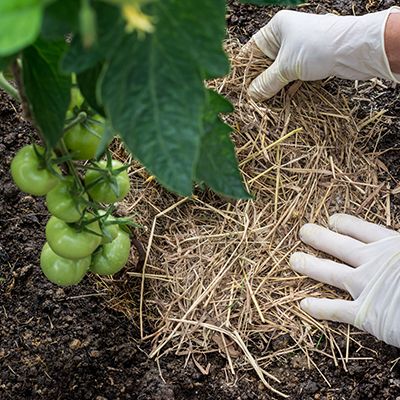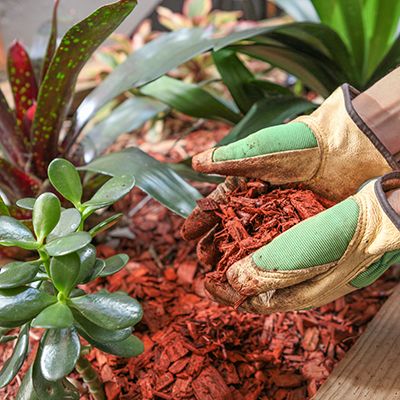

Mulching
A question frequently asked of Wegman’s Nursery is ‘What’s the difference between mulch and amendment?” The short answer is that mulch goes on top of the ground and amendment is mixed into the soil.
Gardeners in the Bay Area are fully aware of the problems with our heavy clay soils. (See our Care Guide on Soil Care & Improvements for improving your soil. Mulching consists of placing a layer of material on the surface of the soil surrounding individual plants. Mulch can be wood chips, pine needles, large or small bits of fir bark, redwood compost, homemade compost, newspaper or gravel.
Newspaper will work but is the least attractive choice. Gravel would be used in special situations such as for xeriscapes featuring succulents and grasses. Fibrous Redwood bark (gorilla hair) is not recommended.
Mulching serves four main purposes:
- The most important is to conserve water. The mulch is placed three to four inches deep around the plant at least to the drip-line but preferably over the entire planting bed. The mulch must not touch the trunk of the plant and should remain 3 to 5 inches away. If damp mulch remains in contact with the trunk of a plant, it can cause ‘crown-rot.’
- When organic materials such as fir bark, redwood compost or pine needles are used, they gradually incorporate into the soil and over the years will gradually improve the texture of the soil.
- Mulch remains moist and helps to stabilize soil temperatures so that the soil does not become too hot in the summer nor too cold in the winter.
- And finally, a well mulched landscape is much more attractive than bare soil, dry, cracked, clay summer soil or wet slimy winter soil.
Among all the mulching materials, costs will vary. Newspaper is a non-cost item and city departments will often offer wood chips at no cost. The wood chips are large and clunky, of mixed origin and look best on a hillside or large landscape area. Tree trimmers who grind their trimmings will usually donate the wood chips as do city departments.
Mr. Ed, in the past, would collect pine needles or Redwood tips from the neighborhood and use them to mulch acid loving plants such as Rhododendrons, Camellias, and Azaleas. Again, at no cost.
Some woodworking shops accumulate large quantities of wood shavings or sawdust. These make excellent mulch and quickly incorporate into bare soil. As they are incorporated and act as an amendment, sprinkle a bit of high Nitrogen fertilizer over them to help them decompose.
We have found that our Master Nursery Gold Rush (fir compost plus 15% aged chicken manure) makes excellent mulch. Gold Rush will soon incorporate into the soil where it also works to break down the heavy clay. Master Nursery Forest Blend, a redwood compost, is our choice for mulching acid loving plants. It is the most economical of the Master Nursery amendments and mulches since it is packaged in three cubic foot bags rather than the more common 2 cubic foot soil bags.
For decorative mulch Master Nursery Forest Bark is your product of choice. The bark is available in two sizes, small and fine (mini-mulch). The fine size will decompose more quickly but the small size will last longest.
Regardless of which mulch you choose, you will have to supplement it each year or two. Depending on the coarseness of the existing mulch, the amount of supplemental material needed will range from one to two inches. Some gardeners, anxious to improve their clay soil will use the fine textured mulches and work them entirely into the soil at the beginning of the new growing season and then remulch the entire area.
If you are using gravel as mulch, it is wise to put down a layer of weed barrier cloth next to the soil then cover the weed barrier with three to four inches of gravel. With newspaper, you use only four to six sheets.
Finally, when it is fertilizer time, sprinkle a suitable Master Nursery product over the surface of the mulch and water thoroughly to flush the fertilizer down to the soil. If you are using soaker hoses or drip lines for irrigation, these can be laid down before the mulch is applied to cover them.
Whatever your choice - the important thing is to Mulch, Mulch, Mulch!